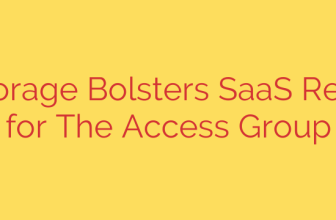
The Rise of AI Sovereignty: Taking Control of Your Digital Destiny
The explosion of artificial intelligence is reshaping industries, economies, and entire nations. While powerful AI tools from a few major tech giants offer incredible capabilities, they also present a hidden and critical challenge: a growing dependency that can undermine national security, economic stability, and cultural identity. This has given rise to a crucial new concept: AI sovereignty.
AI sovereignty is the ability of a nation, organization, or enterprise to build, deploy, and control its own artificial intelligence capabilities. It’s about retaining authority over the essential components of the AI revolution: your data, your models, and your computing infrastructure. Without this control, you are essentially outsourcing your digital future to a handful of foreign corporations, creating vulnerabilities that are becoming too significant to ignore.
The Core Pillars of AI Sovereignty
Understanding AI sovereignty requires breaking it down into three interconnected domains. True control is only possible when all three are addressed.
Data Sovereignty: This is the foundation. Data is the lifeblood of modern AI. Data sovereignty means ensuring that your most sensitive information—whether it’s citizen data, corporate intellectual property, or national intelligence—remains within your own legal and geographical boundaries. Sending this data to a third-party cloud in another country means losing control over who can access it and how it’s used.
Model Sovereignty: An AI model is the “brain” that processes data and generates insights. Relying solely on proprietary, closed-source models from large tech providers means you have no visibility into how they work, what biases they contain, or how they might change over time. Model sovereignty is the capacity to build, train, fine-tune, and operate your own AI models, ensuring they align with local laws, languages, and cultural values.
Infrastructure Sovereignty: AI requires immense computational power, typically from specialized hardware like GPUs. Infrastructure sovereignty means having access to and control over the physical data centers and hardware needed to run your AI models. Without this, you are subject to the pricing, terms of service, and potential access restrictions imposed by foreign cloud providers.
The Hidden Risks of AI Dependency
Failing to pursue AI sovereignty isn’t just a missed opportunity; it’s a strategic misstep that introduces serious risks.
National Security Vulnerabilities: When sensitive government or military data is processed on foreign infrastructure, it becomes a target. This exposes state secrets to potential foreign surveillance and creates a critical dependency for essential services. Imagine a geopolitical crisis where a nation’s access to its core AI platform is suddenly restricted or cut off.
Economic Disadvantage: By sending raw data to external AI platforms, nations and companies are essentially giving away their most valuable digital resource. The value generated from that data—the insights, the innovations, the profits—accumulates in the hands of the platform owner, not the data owner. It’s a modern form of digital colonialism.
Cultural and Ethical Misalignment: Large language models trained on a global dataset predominantly reflect the values, biases, and norms of their creators. This can lead to AI systems that fail to understand local context, languages, or cultural nuances, potentially perpetuating harmful stereotypes or providing irrelevant solutions.
Lack of Control and Customization: A one-size-fits-all AI model cannot address the unique needs of every organization or country. True competitive advantage comes from training AI on your specific, proprietary data to solve your unique challenges. Relying on generic, external models prevents this deep level of customization.
A Practical Path to Achieving AI Sovereignty
Achieving AI sovereignty does not mean completely isolating your nation or company from the global technology ecosystem. It’s not about building every single component from scratch. Instead, it’s about making a strategic choice to build and control what matters most.
Here is a practical, actionable framework for developing sovereign AI capabilities:
Leverage Open-Source Models: The rise of powerful open-source AI models has been a game-changer. These models provide a robust foundation that can be adopted and customized without proprietary licensing fees. Using an open-source model as a starting point dramatically lowers the barrier to entry and provides full transparency into the model’s architecture.
Prioritize Sovereign Cloud and On-Premise Deployment: Instead of sending data out, bring the AI in. Work with technology partners who allow you to deploy AI platforms within your own data centers (“on-premise”) or in a secure, local “sovereign cloud” environment. This ensures your data never leaves your jurisdiction.
Focus on Fine-Tuning with Proprietary Data: The real value isn’t the base model; it’s how you refine it. Focus your efforts on fine-tuning a base model using your own unique, high-quality data. This is how you create an AI that understands your specific industry, legal framework, or customer base better than any generic alternative. This specialized model becomes your defensible intellectual property.
Invest in Talent and Infrastructure: Building long-term sovereignty requires investing in people. Nurturing local AI talent and strategically building out national computing infrastructure are essential steps to reduce reliance on foreign entities and foster a self-sustaining ecosystem.
In the age of AI, the choice is clear. You can either become a passive consumer of technology controlled by others, or you can take deliberate steps to build your own sovereign capabilities. For any forward-thinking nation or enterprise, AI sovereignty is no longer just a technical option—it is a strategic imperative for securing a prosperous and independent future.
Source: https://blog.cloudflare.com/sovereign-ai-and-choice/








